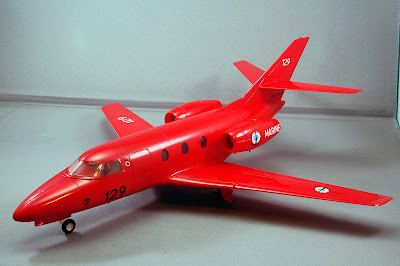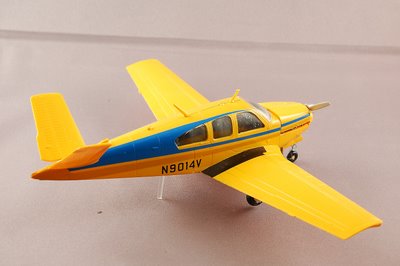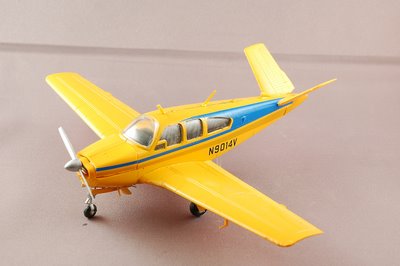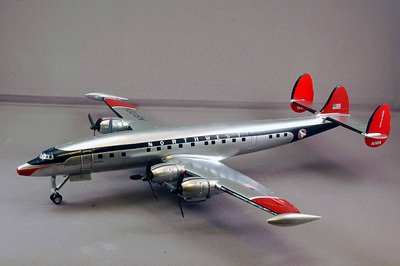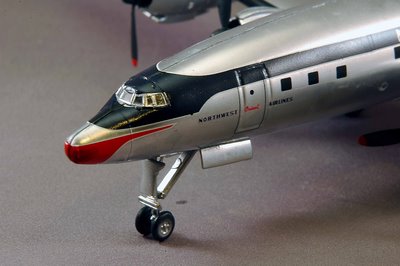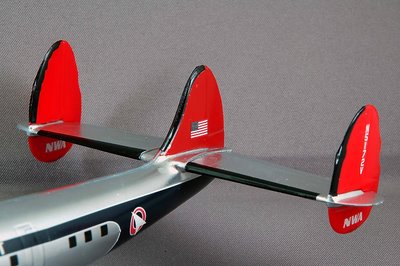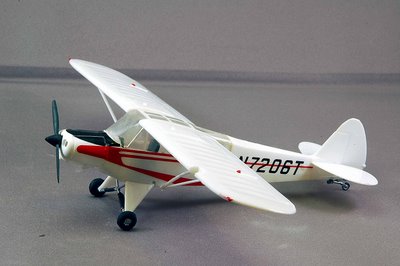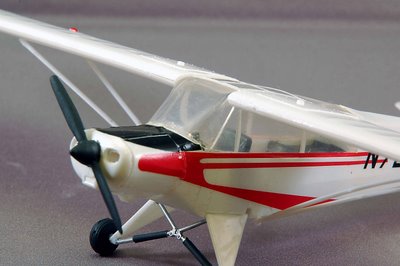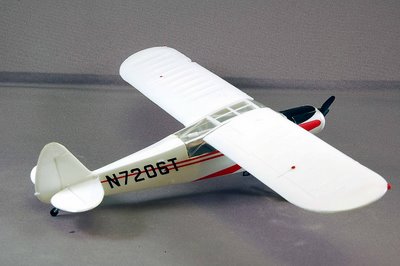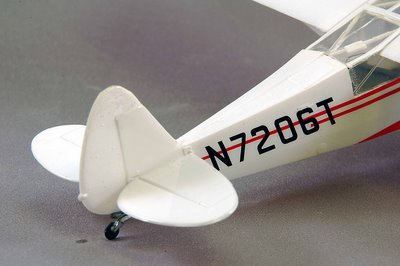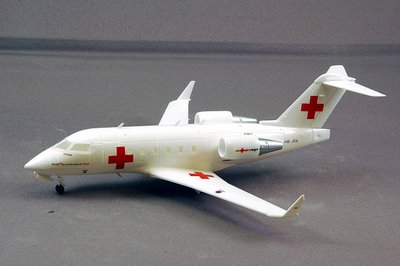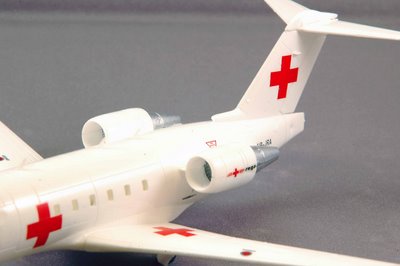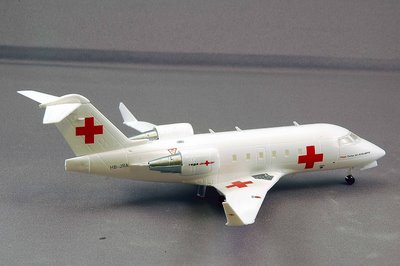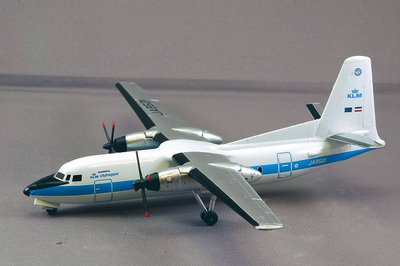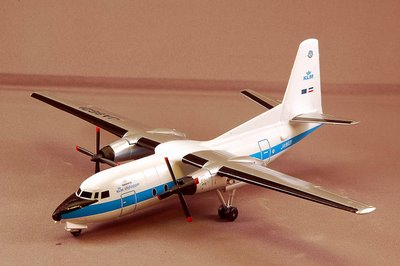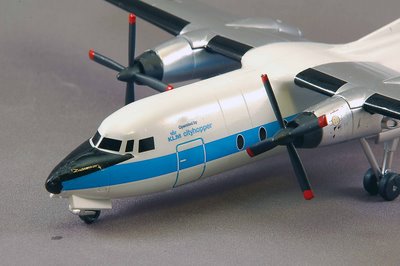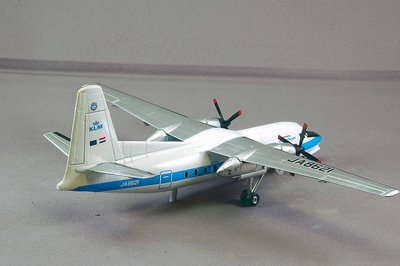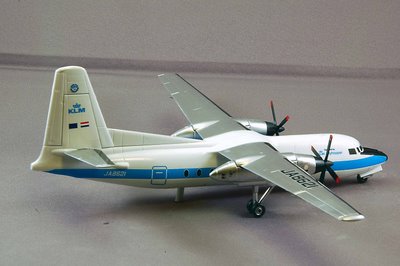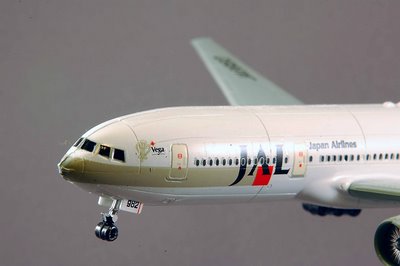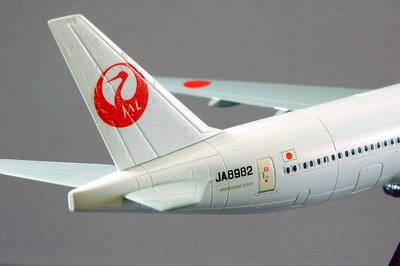Design of the Fokker F27 started in the
1950s as a replacement to the successful
DC-3 airliner. The manufacturer evaluated a number of different configurations before finally deciding on a high
wing twin
Rolls-Royce Dart engined layout with a pressurised cabin for 28 passengers.
The first
prototype, registered PH-NIV, first flew on
24 November 1955. The second prototype and initial production machines were 3 ft (0.9 m) longer, addressing the first aircraft's slightly tail-heavy handling and also providing space for more passengers. These aircraft also used the more powerful Dart Mk 528 engine.
In
1956 Fokker signed a licensing deal with the US aircraft manufacturer
Fairchild for the latter to construct the aircraft in the USA. The first U.S.-built aircraft flew on
12 April 1958. As at the end of the Fokker F27s production, 786 units had been built (including 206 in the
USA by
Fairchild), which makes it the
most successful turboprop airliner of all time.
In the early
1980s, Fokker developed a successor to the Friendship, the
Fokker F50, with upgraded engines and systems.
Doyusha Model Review:
Type: injection New model : yes, 4th quarter 1998 Suited for: beginners Number of parts: 18 Accuracy: credible Looks like: ... a real F-27 This model is available since the end of 1998 and results in a nice small model the Fokker F-27 Friendship, the most built post-WW2 commuter type aircraft in its class. The model can be built quite easy, and goes together without any problems. As is often seen in this scale, windows are represented by decals, which can be a problem if you prefer building a slightly different version for a different airline.
Fortunately, Doyusha have included registration numbers for the entire All Nippon F-27 fleet. I finished my kit as JA8621, which was operated by All Nippon Airways and later also by the dutch Limburg Airlines and finally by Air Anglia of the UK (incidently: this airframe once suffered a nose gear collapse during take off at Schiphol). Conclusion: This model is nice to build and seems to be a real F-27 when ready. It is quite small however in this scale, and can be nicely portrayed next to the derived modernized Fokker 50 of Welsh in the same scale.
Other information:
http://www1.airliners.net/info/stats.main?id=217http://www.answers.com/topic/fokker-f27http://www.flightlevel350.com/Fokker-27_aircraft_facts.html















